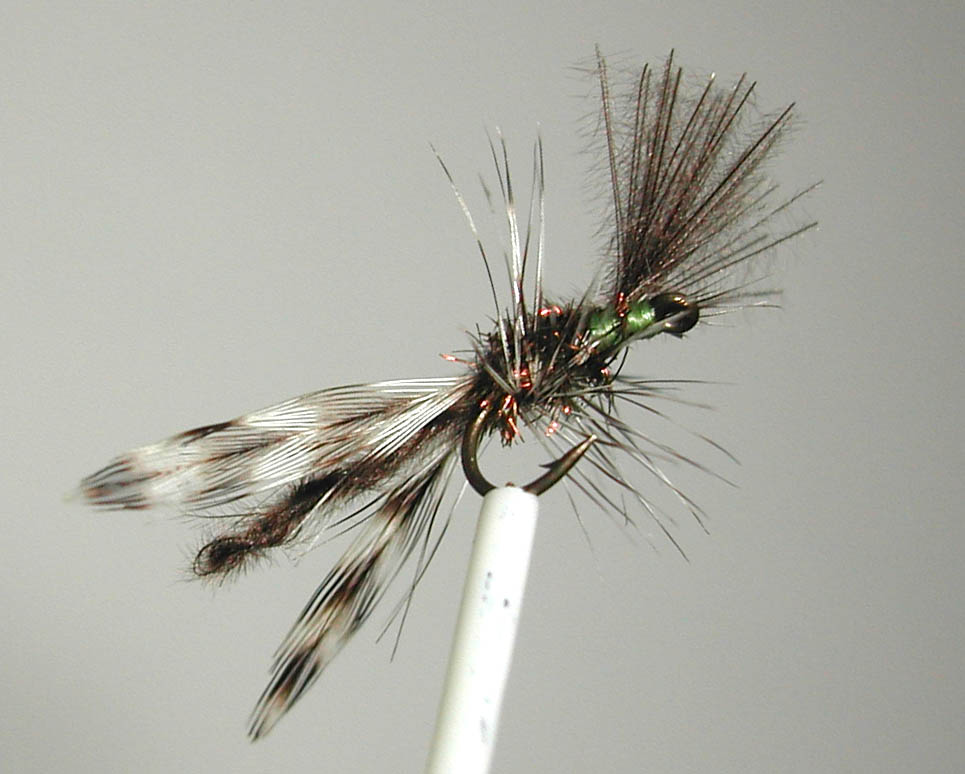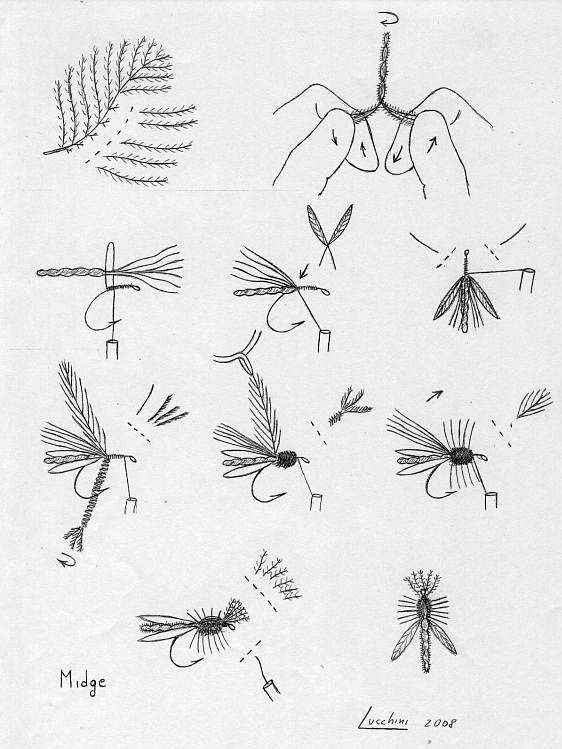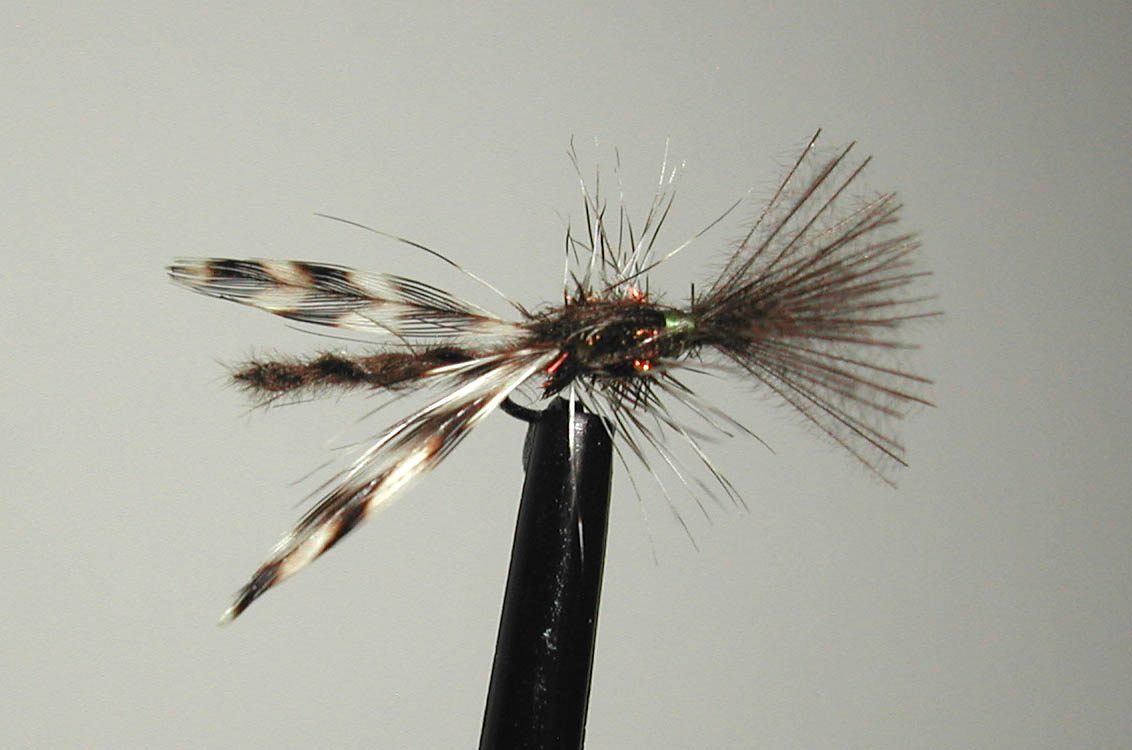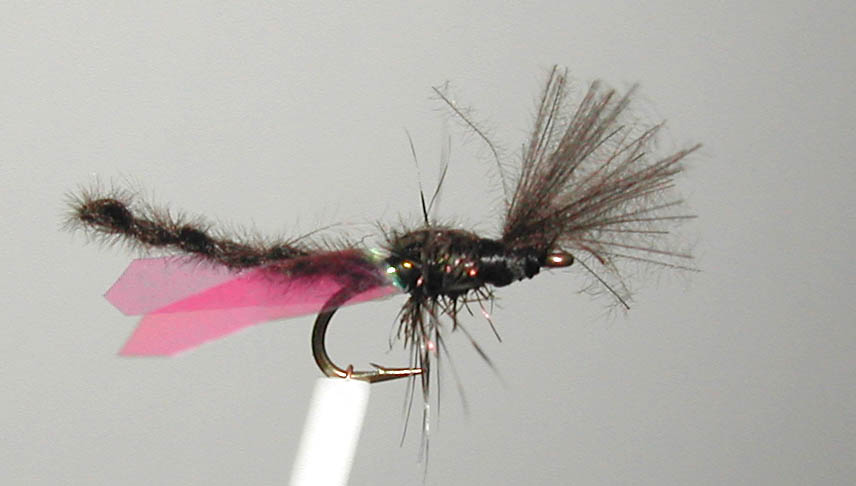AGOSTINO RONCALLO’S VARIATION ON THE PALOMINO MIDGE
Text and images by Agostino Roncallo. Drawings by Lucchini
The first fly that I tied with an extended body of furled CDC herls was an imitation of the adult mayfly.
http://www.tomsutcliffe.co.za/fly-tying/168-twisted-body-micro-cdc-patterns
As midges are prolific in Italy I wondered if the same principle could not be utilised in tying an adult midge pattern in the style of the Palomino Midge originated by Brett Smith of Sheridan, Wyoming.


A variation of the Palomino in red
http://www.danica.com/flytier/bsalzburg/palomino.htm
http://www.flyloops.net/showfly.php?article_id_search=17
Brett utilised a micro-chenille like EZ Dub to create a very effective, extended-body midge pupa imitation. Using furled CDC fibres I produced a CDC version of the Palomino Midge with a thorax of peacock herl. Then I realized that by slightly altering the tying sequence I could construct an adult chironomid imitation with hackle tip wings and a hackle palmered through the peacock herl thorax.

Dressing

1) Cut a small bunch of hackle barbs from the CDC feather
2) Twist the CDC herls together to create a detached body.
3) Attach the detached body to the bend of a grub hook and leave the excess CDC herls pointing backwards to be used later to create the wing case and antennae on the fly.
4) Take two paired grizzly hackle tips and tie them in pointing backwards to represent the wings of the midge. Raffia can also be used for the wings.
5) Tie in your grizzly hackle feather and attach three strands of peacock herl. Wind the peacock herl forward to create the thorax.
6) Palmer the hackle through the peacock herl to represent the legs of the midge.
7) Fold the remaining CDC strands forward over the thorax. Tie down and whip finish leaving a tuft of CDC herl projecting forward over the hook eye to represent the antennae of the insect.


This fly has proved effective on spooky, selective fish in heavily-fished areas. I attribute its success to its relatively small size and sparse dressing.


